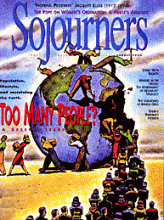A historian looks for facts, while a novelist probes for the hidden truth of a story. In her non-fiction novel about Dietrich Bonhoeffer’s resistance to Hitler, Mary Glazener incorporates elements of both disciplines, but the historian dominates.
Based on more than 10 years of research, The Cup of Wrath is a compelling story of the young German theologian’s courageous attempt to be faithful to God during Hitler’s repressive regime. The question Bonhoeffer struggled with was one many face today, though for us it’s mostly theoretical: How do you resist evil as a Christian without disobeying Christ’s commands to act nonviolently?
The irony of Bonhoeffer’s witness is that he was almost alone among contemporary Lutherans in his pacifism, yet he felt compelled to take part in a plot to overthrow Adolf Hitler, a plot that developed into an attempt to assassinate the self-proclaimed Fuhrer.
You can read this book as an apology directed at those who glibly criticize Bonhoeffer for dropping his pacifist beliefs and acting violently. Glazener shows both the overwhelming evil of Hitler’s regime and the agonizing process of Bonhoeffer’s decision to take action to stop evil instead of separating himself from the problem in order to remain pure.
Bonhoeffer spent some time in the United States before the war. Paul Lehmann of Elmhurst College tried to talk him into staying instead of returning to Germany. Lehmann asks, "Isn’t what you have to say more important than what you might do in the conflict at home?" Bonhoeffer replies, "No. If I stayed here and war came, I’d have nothing to say. I would have compromised my witness."
Read the Full Article
